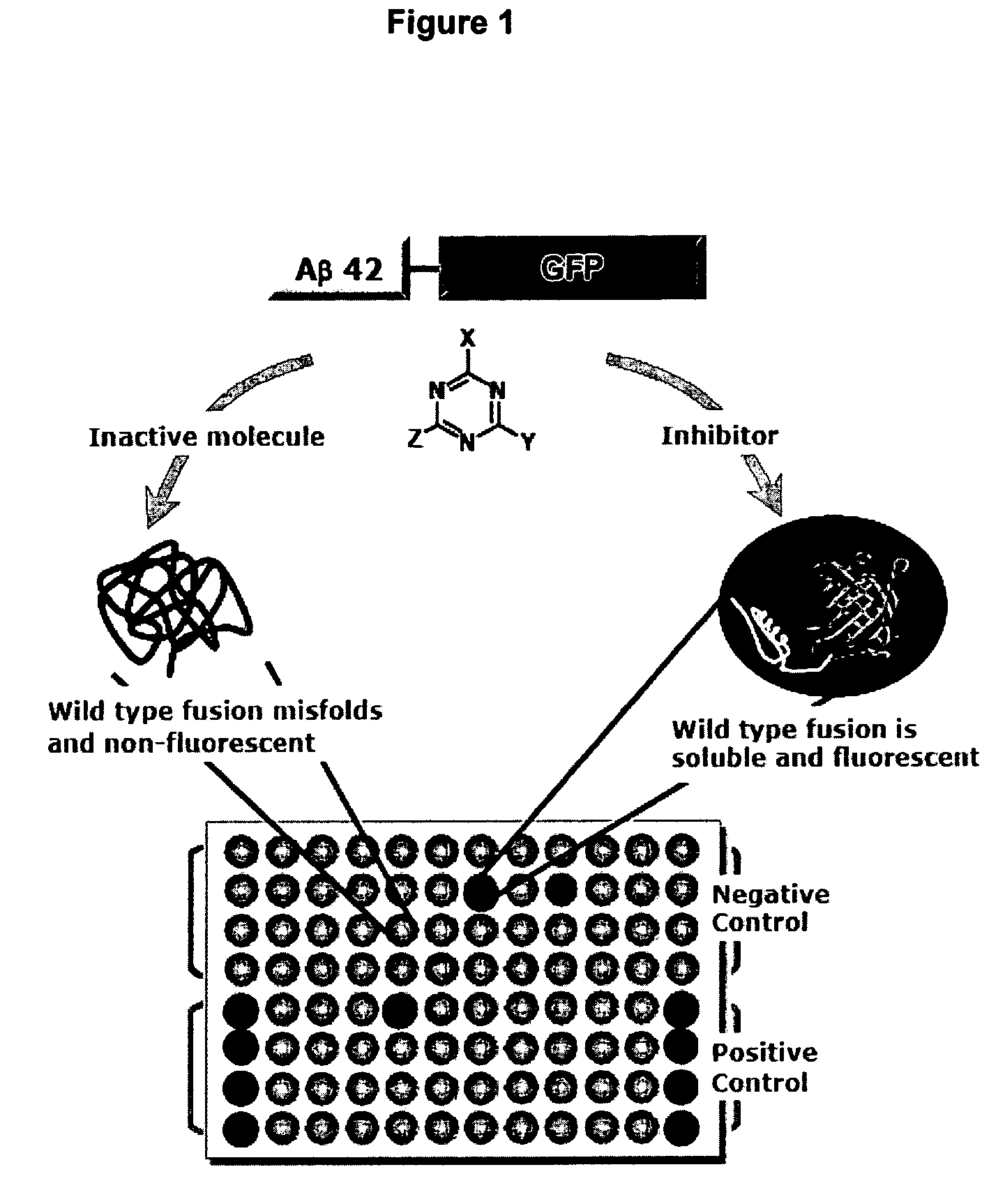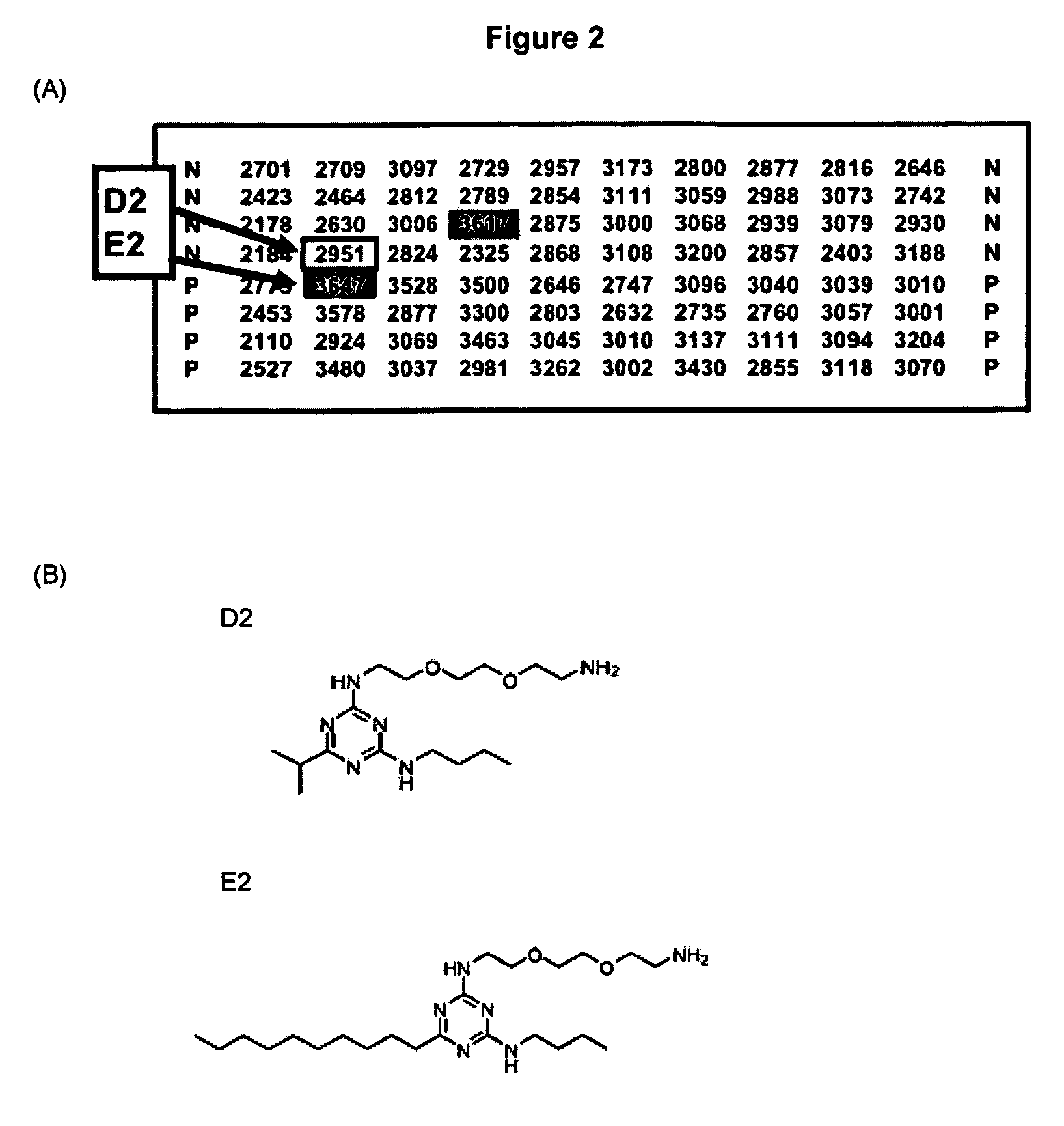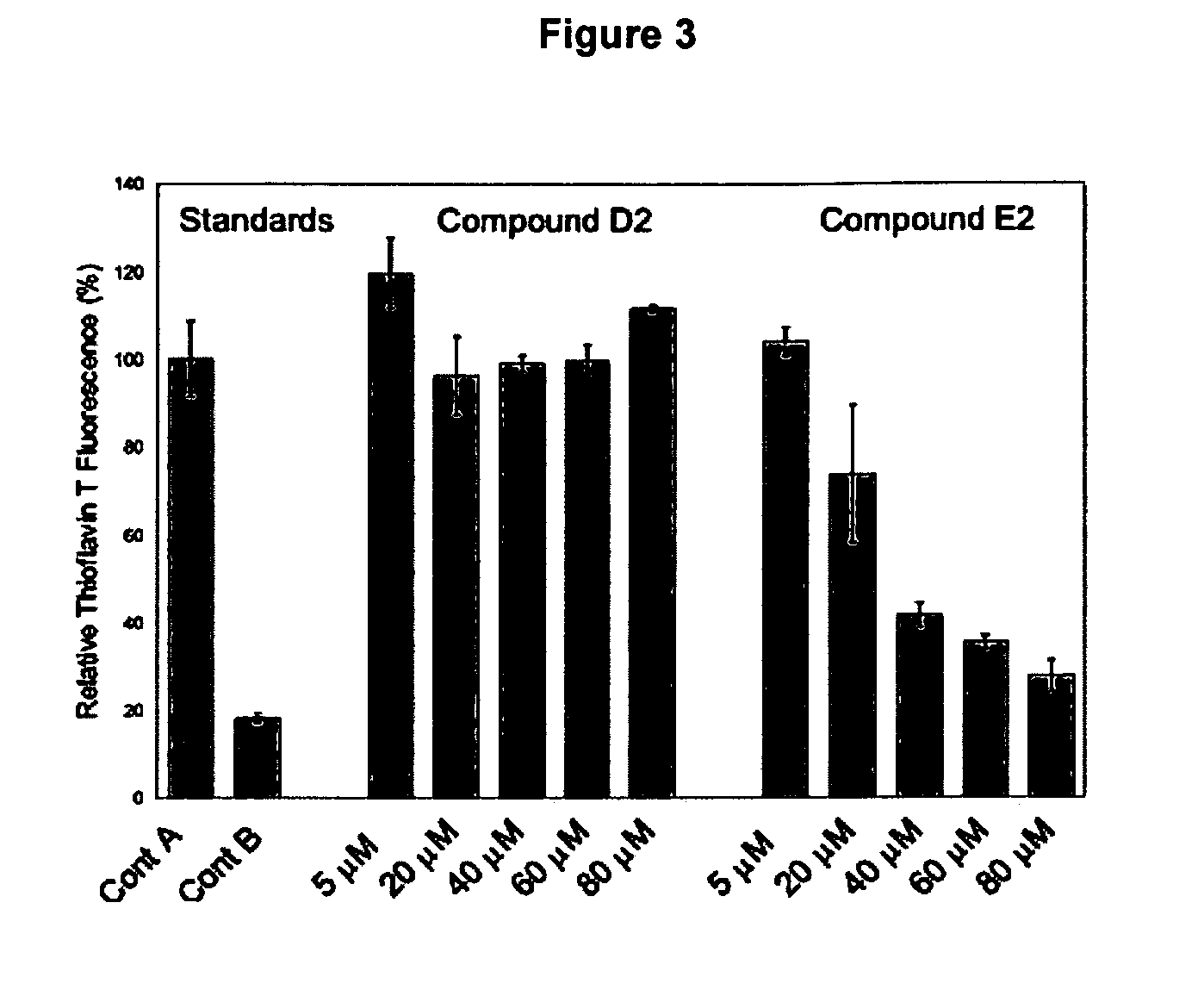High throughput screen for inhibitors of polypeptide aggregation
a polypeptide and inhibitor technology, applied in the field of polypeptide aggregation inhibitors, can solve the problems of affecting the synthesis of this 42-residue polypeptide, laborious and time-consuming, and the availability of pharmaceutical agents directed to modulate the aggregates
- Summary
- Abstract
- Description
- Claims
- Application Information
AI Technical Summary
Benefits of technology
Problems solved by technology
Method used
Image
Examples
example 1
[0068] Fluorescent Screen for Inhibitors of Aβ Aggregation
[0069] To generate a positive control, random mutagenesis was carried out on the Aβ42 sequence. A library of mutagenized sequences was transformed into E. coli and plated. Fusion proteins containing wild-type Aβ42 produce colorless colonies. Mutations in Aβ42 that inhibit aggregation yield green fluorescent colonies. Green colonies and some colorless controls were picked and cultured in liquid medium. Cultures expressing a fusion protein with the mutations Phe19Ser, Leu34Pro in Aβ42 are green, because these mutations inhibit Aβ42 aggregation, enabling GFP to fold and be capable of fluorescence (18). This mutant is thus suitable for use as a positive control.
[0070] The vector for expressing the Aβ42-linker-GFP fusion protein was described previously (18, 19) and the contents of these references are specifically incorporated by reference herein for all purposes. The mutant GFP which was used was described by Waldo et al. (17)...
example 2
[0077] Thioflavin T Studies Confirm the Activitv of a Selected Inhibitor
[0078] The Aβ42-linker-GFP fluorescence screen was successful at identifying potential inhibitors of aggregation. Because the screen relies on several artificial features, it is worth considering whether compounds isolated by this screen actually inhibit aggregation of the Aβ42 polypeptide in a well-defined biochemical system. The artificial features of the Aβ42-linker-GFP screen include (i) a fusion protein in which the relevant 42-residue Aβ sequence is only a small fraction of the 292-residue fusion protein, and (ii) expression in E. coli, which is clearly not the natural system for Alzheimer's disease. Consequently, we performed an experiment to verify that fluorescence observed for the Aβ42-linker-GFP fusion protein expressed in E. coli indeed correlates with diminished aggregation of the Aβ42 polypeptide.
[0079] Mutations in Aβ42 that yield green fluorescence in the context of the Aβ42-linker-GFP fusion p...
example 3
[0084] Electron Microscopy
[0085] A42 polypeptide at a concentration of 20 μM in PBS buffer was incubated in the presence or absence of the test compounds at various concentrations. Following 5 days of incubation at 37° C. under quiescent condition, Formvar carbon-coated grids were floated on a drop of the sample for 2 min. The grids were blotted using filter paper and then stained for 2 min with freshly made 1% uranyl acetate. Samples were imaged using a Zeiss 912ab Electron Microscope.
[0086] The ability of E2 to inhibit the assembly of Aβ42 into amyloid fibrils was also assessed by electron microscopy (EM). Aβ42 polypeptide was incubated for five days, either alone or in the presence of compounds D2 or E2. Five days is a relatively long incubation time; in the absence of inhibitors, Aβ42 readily forms visible fibrils after one or two days (data not shown). Following the 5-day incubation, samples were stained with uranyl acetate and imaged by EM. As shown in FIG. 5, the control co...
PUM
| Property | Measurement | Unit |
|---|---|---|
| wavelength | aaaaa | aaaaa |
| wavelength | aaaaa | aaaaa |
| fluorescence emission peak | aaaaa | aaaaa |
Abstract
Description
Claims
Application Information
 Login to View More
Login to View More - R&D
- Intellectual Property
- Life Sciences
- Materials
- Tech Scout
- Unparalleled Data Quality
- Higher Quality Content
- 60% Fewer Hallucinations
Browse by: Latest US Patents, China's latest patents, Technical Efficacy Thesaurus, Application Domain, Technology Topic, Popular Technical Reports.
© 2025 PatSnap. All rights reserved.Legal|Privacy policy|Modern Slavery Act Transparency Statement|Sitemap|About US| Contact US: help@patsnap.com



